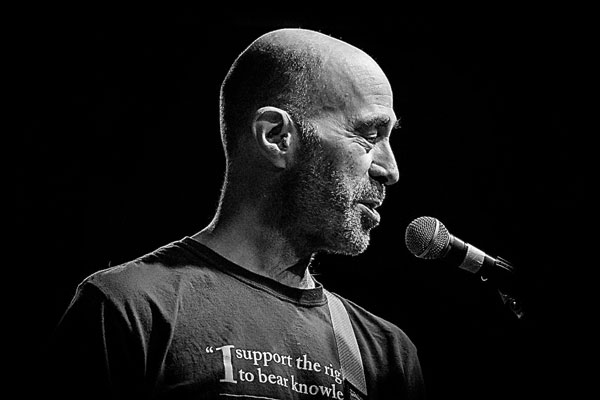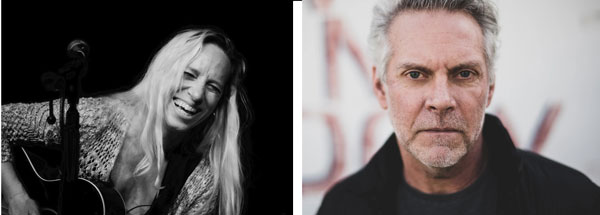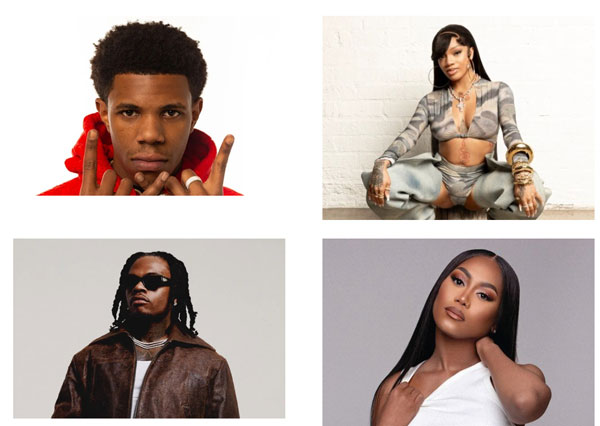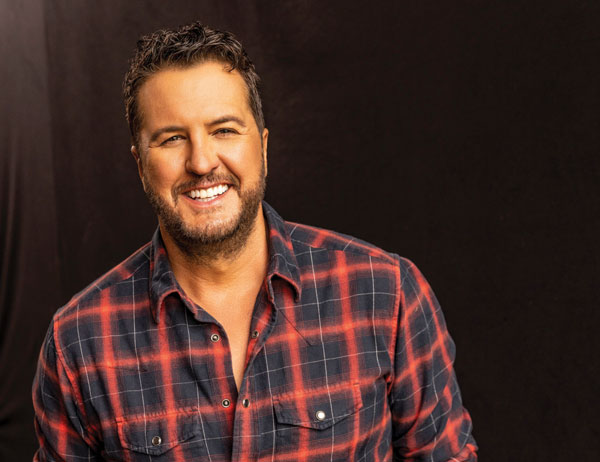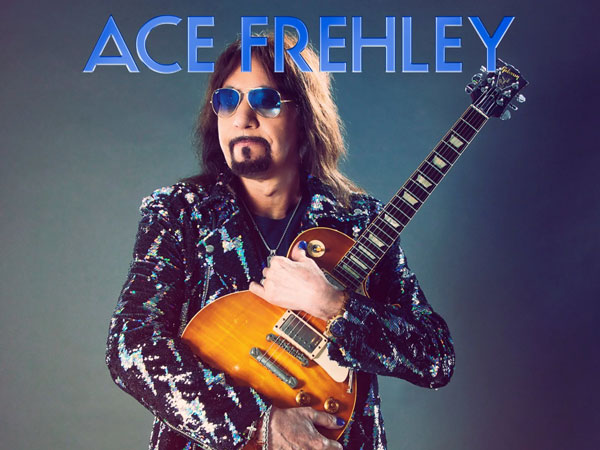Spotlight Central: You left high school at age 16 to attend college where you studied at the University of Notre Dame and Loyola College in Baltimore, but quit to begin your professional music career in the Washington, D.C. area. What kinds of gigs did you play and with whom?
John Hall: When I was at Notre Dame, I played in a bluegrass band, sang in an a cappella vocal group, and played with the football pep band. I also played in a rock and roll band where we played a lot of fraternity parties. When I was going to Loyola in Baltimore, I worked with a guy who had heard that this club on M Street in Georgetown was looking for a house band and holding auditions that weekend, as I recall. I put together a group with my older brother Jim playing bass, myself and one other guy playing guitars, and another friend drumming, and we went and auditioned for the gig and got it. The place was called The Peppermint Lounge and it was a poor man’s version of the real Peppermint Lounge where Joey Dee and the Starliters played in New York.
So we were playing on M Street in Georgetown where the Georgetown University kids would come out and party at various clubs. Emmy Lou Harris was playing in a band at a place called The Silver Dollar, the setting for her song, “Queen of the Silver Dollar,” Roy Buchanan was playing with his band at another place, and there were other bands playing in other clubs. Keep in mind that this was during the time of the British Invasion, so a lot of people were trying to sound like British bands who wrote their own songs.
Spotlight Central: Are you referring to Roy Buchanan’s band, The British Walkers?
John Hall: The British Walkers was the name of a band that Roy Buchanan was in, but my band was called The Wad. Roy played by himself under his own name, sometimes, but he also joined The British Walkers in which he played guitar, a guy named Bobbie Howard sang lead, and Steve Lacey and Jack Brooks played bass and drums. Both Roy and Bobbie Howard left The British Walkers and Teddy Speleos — a young guitar player with a unique style that featured a sort of a snarling vibrato and a use of the volume knob with his little finger to make the notes swell in — and I replaced Roy and Bobbie. The British Walkers was the best-known band I played with in D.C. Then, Teddy and I left and took a Greyhound bus to New York and started a band in Greenwich Village called Kangaroo.
Spotlight Central: That’s the group we wanted to ask you about next. We understand that it was in 1967, at the age of 18, that you started Kangaroo. What instruments did you play, and did the group release any recordings?
John Hall: Most of the time I played bass in that band, although I did play guitar sometimes. We had a woman named Barbara Keith who was a really good singer/songwriter and acoustic guitar player who played rhythm guitar and sang. Also, we had N. D. Smart in the band, who would go on to be the drummer in Leslie West’s Mountain.
Kangaroo made an album for MGM Records — I don’t know if it’s still in print or anything — but it was fun, and it was a time in the Village when so much was happening. We were just lucky to be there. We played at the Café Wha? in Greenwich Village, alternating sets with a band called The Castiles. That, of course, was Bruce Springsteen’s band — these guys from Jersey — and there were teenyboppers from Jersey and Long Island who would come in to this underage club where there was no alcohol but they’d be served all the potato chips and ice cream sodas anyone could want.
Each band would do six sets of probably 40 minutes each and they’d be alternating — so it would be us/them, us/them, us/them from two in the afternoon until midnight or something — and, for that, we would get six bucks a night and all the potato chips we could eat.
But the thing that was exciting about it, in retrospect, was that John Sebastian and the Lovin’ Spoonful had just wrapped up their residency at the Night Owl Café when their first record hit the charts and they were on the road with “Do You Believe in Magic,” “You Didn’t Have to Be So Nice,” and all those wonderful songs. And they were replaced at the Night Owl by James Taylor and his band, The Flying Machine, which consisted of Danny Kortchmar — who I’m sure you know all about — and “Bishop” O’Brien who went on to play drums with Carole King, and my friend Zach Weisner on bass, the son of Jerome Weisner, the president of M.I.T who was President John Kennedy’s science advisor at the time.
Around the corner, The Fugs were playing at the Player’s Theater, and other bands were playing in other venues. I remember Jimi Hendrix was playing under the name Jimmy James and The Blue Flames at the Café Au Go Go on Bleeker Street, and one time when we were playing a Kangaroo set at Café Wha? he came in to hear us and sat down right at the front bench. We all knew who he was, of course — everybody did — and this was before his big records came out; he didn’t have the Are You Experienced thing out yet. He and his group were backing up John Hammond, the blues player, as Jimmy James and the Blue Flames and they were playing straight blues. And you know what? He was as good a blues guitar player as anyone, sort of like Buddy Guy going a little bit psychedelic.
And right across the street, in between sets, I’d stick my head into the Kettle of Fish where I would see Bob Dylan and Tim Harden and people like that at the bar discussing various topics and having a beer together, so I was lucky to be there for all of this because it was a really fertile period for musical creativity at the time in New York.
Spotlight Central: In 1969, at the Café Wha?, you met your writing partner, Johanna, and the two of you wrote “Half Moon” for Janis Joplin, a song which became the B-Side of her single, “Me and Bobby McGee.” How did that come about?
John Hall: I had written a bunch of songs for the Kangaroo album, where I was both a lyricist and melodist. Johanna was writing music reviews for the Village Voice and got a request approved for an interview with Janis from Janis’ publicist, and that was because Johanna had given a favorable review to a record that other critics and reviewers at the time were not so happy with. That was the Kosmic Blues album — where Janis had left Big Brother and the Holding Company and put together a band with horns, trying to do more of an R&B thing than the California rock thing she had first been doing with Big Brother — and Johanna gave it a good review. Johanna asked Janis’ publicist to see if she could set something up, and they ended up having a lunch date for an interview and bonded over lunch. They hit it off so well, the next thing I knew I was at our apartment on the Lower East Side and there was a knock at the door. The door opened and in came Johanna with Janis Joplin beside her.
This took place when I was maybe 18 or 19 years old. The three of us sat around, talked and joked, and had a good time. Since it was coming up on Christmas, we sang some blues versions of Christmas carols. Then I played Janis some songs I had written both music and lyrics for, and she said, “Well, it’s good music, but it sounds like songs a young guy would write,” and I just said, “Well, that’s me!” Janis turned to Johanna and said, “You’re a writer. You’re a woman. Why don’t the two of you write me a song that a woman could sing?” So it became a command performance, and once Johanna presented me with the lyric for “Half Moon,” I set it to music and the rest was history.
Spotlight Central: Speaking of “Half Moon,” we’re told you once played a solo gig in D.C. opening for the Smothers Brothers where the crowd wasn’t especially overwhelmed — at least until you played “Half Moon” — but wasn’t there a musician in the audience who came to see you afterwards to give you some advice?
John Hall: [Laughs] Oh, yeah. John Denver was there. I don’t know if he came to see The Smothers Brothers or me — probably The Smothers Brothers who, at the time, were hugely famous, and funny. But he came to the dressing room, which was upstairs over the Cellar Door, and he gave me a little pep talk. I had been kind of discouraged that I wasn’t really being listened to when I played a bunch of original songs, singing and playing my best, and winding up with “Half Moon.” I had tried to keep the audience’s attention, but they basically talked through my whole set, and John Denver said to me, “Don’t worry. Just keep doing what you’re doing. It’s a mismatch. You’re not the right act to open for The Smothers Brothers. They should have had another comedy act opening for them.” He said he really liked what he’d heard, however, and also told me, “Don’t give up. Just keep working.”
Spotlight Central: And what he did for you, you ended up doing for other artists once you had made it yourself, didn’t you?
John Hall: Yeah, I tried to do that, too — because you just never know. People are toiling out there. At the time, we did a lot of Holiday Inn shows, and weddings, and whatever we could do to make money, and for any band getting past the point where you’re playing cover songs — as opposed to writing and playing your own songs — is sort of a testing ground. I mean, unless you’re so good at cover songs that people would rather listen to you than listen to the original artists who did them, you really need to set yourself apart by doing your own songs.
Spotlight Central: In 1970, you released Action, the first of many John Hall solo albums, John Hall Trio albums, and John Hall Quartet albums, and you started doing sessions with musicians including Felix Cavalieire and Lou Christie. You played on Seals and Crofts’ debut album and Bonnie Raitt’s album, Give It Up, and we understand you also did some touring with Taj Mahal, where you had the opportunity to jam backstage with some legendary musical brothers?
John Hall: Yes, literal brothers and musical brothers. We did a lot of shows with Taj Mahal which were set up by promoters around the country. We did the Fillmore East and Fillmore West, and we did a double live album which was produced by John Simon, who got me into the band in the first place by recommending me to Taj as a guitar player. We also played a lot of shows in the Southeastern United States with The Allman Brothers, when it was the original line up of The Allmans with Duane Allman and Dickey Betts.
I remember coming into some college, where we got off the bus and went inside to find our dressing room. At the time, this would have been a theatrical dressing room which was not very plush — no amenities — basically bare bulb light bulbs and a counter and mirror so that people could put on makeup and costumes for whatever theatrical production they happened to be in. And as I walked by one dressing room looking for our room, I saw Duane and Dickey playing their Les Paul guitars without any amps, just playing very quietly.
I put my guitar case down and took my Fender Stratocaster out and I went in and sat down with them and started playing along. It was just a shuffle 12-bar blues and I played rhythm guitar while each of them would play a solo, and then they would stop soloing and look at me like I should “take it” and I would play a couple of verses of a solo, and we’d just trade around in circles — just “you take it,” now the next person takes it, and now the next person takes it — and eventually we got around to a blues ending and introduced ourselves.
I look back at that now and I just think what a miracle it was for me — a kid from Elmira — to be in that place at that moment in time. I mean, I guess every place is a moment in time, and every place in its own way is a miracle, and every person you meet is, too — but these particular guitar players were so influential. I give thanks to John Simon who brought me into Taj’s band and thanks, too, I guess, to my playing which was good enough that Taj was willing to take me on the road to play these kinds of shows with him.
We also did some shows with Little Feat, back in an earlier version of the group when Bill Payne and Richie Hayward were in it. Little Feat was a really good band. We did the Fillmore West with them, along with a couple of other acts. Bill Graham, the promoter, would put together a combination of billings at his shows that was very much like the radio stations I listened to back in Elmira. He’d have a country act, a rock act, a bluegrass act, and a soul singer, or blues band, or something like that. It really didn’t matter to him. He thought all music was good, and he would pick the people he liked from different genres and put them together, and that was a wonderful way to learn about other kinds of music.
Spotlight Central: After touring Europe opening for Santana, you moved to Woodstock and then to Saugerties, NY. In January of 1972, you founded Orleans with Larry Hoppen and Wells Kelley, and Lance Hoppen joined the group later that year. Rehearsing in your basement in Saugerties, did you have any idea that this band was going to end up being something special?
John Hall: Well, I always thought it was special. I never thought, “Hey, let’s rehearse this band so we could play a couple of weddings and quit and get a real job.” My idea right from the beginning was, “Let’s make this band be really good.”
I had gone around with my parents, where they were telling me I was “throwing my life away” and I should “go back to school and get a degree and get a real job,” and “music is fine for a hobby but don’t try to do it professionally.” That was their advice, and I understood it. They came out of the Depression. They were actually born a couple of years after the last pandemic, the Spanish Flu. Their generation learned a different set of rules and priorities, and it was really about putting a roof over your head and keeping food on the table and keeping the family warm. They were both very educated — my mom had a masters and my dad had a doctorate — and they saw me dropping out of school to play music, and they were afraid for me. In later years, when they saw that I was successful and they liked the music, they were very happy, but I always thought, “I’m gonna do this because the band’s gonna be really good and because we’re gonna be successful,” so in that sense, I guess, yeah, I thought we would be because we were doing it for that reason.
So Orleans started out with Larry and Wells and me, and then, nine months later, Lance joined the band. We always thought, “Well, we can finish this song and rehearse that song, and arrange this one so you’ll sing this section and I’ll sing that section,” and “We’ll have these harmonies over here — you know, Wells will be on the bottom, I’ll be in the middle, and Larry will be on the top harmony — and this’ll be your solo here and I’ll take a solo after you,” and we’d just try to make sure things were well-put-together. And it helped that we were spontaneous enough so that in the middle of a song we could switch instruments, we could modulate into a different key, or we could change the time signature. It was really a jam band; we did a lot in the early days that was more like a jam band than the Top 40 pop band a lot of people came to know us as because they had heard “Dance With Me” or “Still the One” before they heard us do any other stuff.
So, yeah, we would rehearse in the basement, and I didn’t know exactly what was gonna happen, but I was pleasantly surprised and grateful when I heard our song on the radio coming out of WABC, the top station in New York City, for the first time — you know, “We made it! We did it!” — but I always had the feeling that if we worked hard enough at it and did our parts right it could happen.
Spotlight Central: And it certainly did happen: ABC Records released Orleans, and Orleans II was released in Japan and Europe. Then, Chuck Plotkin, head of A&R at Asylum, heard the group at Max’s Kansas City and signed Orleans to Asylum Records. Plotkin produced your third album, Let There Be Music, and — as you just mentioned — the band really hit it big with one of the songs you co-wrote, “Dance With Me.” How did that song come about?
John Hall: My wife at the time — and cowriter — Johanna, and I were in our house in Saugerties, NY. I was sitting in the living room on some spring morning playing my acoustic guitar, and she was in the kitchen making coffee or something. I started playing that melody on the guitar. I had found this open D tuning, and I was just playing that guitar part and she called in, “Sounds really good!” from the other room. She said, “It sounds like ‘Dance with Me,’” and I said, “Maybe we could think of something more original?”
And, of course, she was right. I mean, I don’t always want to do the same thing musically or lyrically — I want to think of something to say to people that I haven’t said before — but in this case, those were the right words for that melody. She came up with the first verse within 10 or 20 minutes, and then we were stuck and we couldn’t finish the song. When I played it for Larry on the road somewhere, Larry said, “Boy, that’s really good. You’d better finish that song.”
A couple of months later, we were driving back from a show in Ithaca, NY — in fact, near the Woodstock area — and Johanna, as we were bumping down the road, said, “Pick the beat up and kick your feet up,” and then she started scribbling on the back of an envelope. At that point, we just talked back and forth about the second verse, and the lyrics were finished before we got home.
Spotlight Central: In 1976, Orleans released its fourth album, Waking and Dreaming, along with one of our all-time favorite songs, “Still the One.” How did that song come to be?
John Hall: Our downstairs neighbor in New York — in the apartment we used to have in New York — was breaking up with her husband. Her husband was substance-dependent to the point where it was impossible for anyone else to live with him who wasn’t that way also. Her name was Charlotte, and she said to Johanna, “There are so many songs about people breaking up. Can you write me a song about people staying together?” So Johanna wrote, once again, on the back of an envelope — that ubiquitous envelope — in handwriting, the entire lyric: “We’ve been together since way back when/Sometimes I never want to see you again/But I want you to know/After all these years/You’re still the one…” And I looked at it and I went, “I hear it.” And then I got my guitar and I sat down and I wrote the music in about ten minutes.
Spotlight Central: Such a great song!
John Hall: I mean, sometimes it’s a gift. It comes to you almost of a piece, where you don’t have to put one piece together with the other over a long period of time to make the song. It just comes like a vision, and that’s what happened, I guess, with that song.
Spotlight Central: But recording “Still the One” for the group wasn’t so easy! Didn’t you guys have to record it several times?
John Hall: [Laughs] We recorded it three times.
Spotlight Central: What happened there?
John Hall: Well, you know, “Still the One” is kind of a shuffle song and there are different ways of playing a shuffle. First, we tried it with Wells playing drums and it was more of a [sings] “Da da-dat da-dat da-dat” kind of shuffle. And then we tried it with Wells and Jerry Marotta both playing drums — Jerry had joined us for that one record — and there was still something sloppy about it; we just couldn’t get the groove right. So we wound up cutting it a third time with just Jerry playing drums and Wells playing percussion.
Chuck Plotkin and Jerry and I worked in the studio for an hour while everybody else went out to lunch. Chuck was a record producer, but he listened like a man in the street. When we were rehearsing or playing a song for him, he would drum on his knees with his hands. He’d be drumming along and, all of sudden, when we would get to a particular section, he would stop drumming and say, “Something changed! What was that? I was moving, I was dancing, I was feeling it, but all of a sudden, I didn’t feel it anymore. What happened there?” and we’d have to go back and take the arrangement apart and figure out what had changed.
So he was doing that kind of thing, and he said, “This drum part is just too complicated.” We can’t have that same “da da-dat da-dat da-dat” old-fashioned shuffle that so many bands play. Now Jerry Marotta was very good at playing metronomically before there were drum machines — [laughs] before you could program a drum part, you had Jerry Marotta! Jerry could go “Boom-pat, ba-boom pat, ba-boom, boom pat” — with the kick and snare just slamming the beat. And then instead of the upbeat part of the shuffle, “Da-ding dat, dad-ding dat-it, dad-it dad-it, dad-it” being played on the high hat or on the drums, we had it on the piano — like a reggae upbeat piano — and I played it. Even when I wrote the song I was kind of hearing that upbeat piano.
So we just worked on it ’til we got that feel down. And with the bass playing fours and just hammering the root of the chord — which Lance did a good job on; it moves a few times when it gets to the bridge and goes to half time and then goes back to the regular feel again, and the chords deviate in the bridge to more of a power chord thing that works really well — but 90% of the song is just slamming down that beat. And the guitar part is just Chuck Berry [sings] “Duh-da, duh-dee, duh-da, duh-dee” — which is right out of the Chuck Berry book, so that’s how it all came together.
And a similar thing happened with “Dance With Me.” We cut that song three times, too. Chuck was a good enough producer that he could always tell us what was wrong. He could tell me, as a songwriter, “This section needs to go. This section is great,” “This section works, but the bridge should become the second half of the chorus and there should be no bridge,” or “You should change this arrangement totally,” or whatever it was. Chuck had our respect. He had worked with enough musicians we knew and loved, and he was respected in the business enough that he didn’t need to say things frivolously. When he sat us down and said, “Well, I know you’ve cut ‘Still the One’ twice already, but we still don’t have it,” some people might have thrown a fit and said, “But we’ve been in California and staying in this hotel for two months already — I want to get home!” but we knew enough not to do that and that we should take his advice seriously.
Spotlight Central: His advice turned out to be so good that in 1977 “Still the One” became the theme song for the entire ABC television network. In that same year, however, you left the group and went on to work as a songwriter and session musician. And in 1979, you co-founded Musicians United for Safe Energy (MUSE), and along with Jackson Browne, Bonnie Raitt, and Graham Nash, you organized a group of concerts at Madison Square Garden which were captured in a triple album and movie, both entitled No Nukes.
John Hall: Jackson and Bonnie and Graham and I were the musicians who founded MUSE, and we were all on the board of directors of MUSE, but Bonnie and I were the only two musicians to be on the board of the MUSE Foundation, which involved all the people from the safe energy movement. The Foundation voted on how to give away the money we raised from the concerts, the record, and the movie, and that was a bit more of a challenge for Bonnie and me — I mean, putting together a concert at Madison Square Garden with five days of shows is complicated and takes a lot of effort, but then doing the Foundation work, after the fact, where you’re not getting the fun of playing and singing the music at the same time is really more like work!
Spotlight Central: Speaking of playing and singing music, you put together such a great line-up of artists for the MUSE concerts: Springsteen, Crosby Stills and Nash, Tom Petty and the Heartbreakers, etc. Do you have any special memories of the No Nukes event that stand out as favorites?
John Hall: There are quite a few memories. I think my favorite was when we were doing the finale where we were performing “Takin’ It to the Streets” with Michael McDonald and the rest of the Doobie Brothers, and James Taylor and I were singing. I was singing back-up — I wasn’t supposed to be singing lead — and James was supposed to be singing lead on the second verse, and everybody in the whole cast was up there singing with us as well: Carly Simon, Jackson Browne, Graham Nash, Nicolette Larsen, and just on and on.
So we do the first verse where Michael McDonald sings, “You don’t know me but I’m your brother” and the whole first part of the song, and we all join in on the chorus, [sings] “Takin’ it to the streets.” And as the second verse is about to happen, I look up at James and he’s looking into the stars — looking into the lights — and he’s just, like, fazed, and he’s not quite there in the moment, so I sing, “Take this message…” and he sings, “…to my brother, Thank you John!”
If you ever watch the movie or listen to the live recording, it’s just the funniest thing, but most people never even notice it! People know the song. They know the verse goes, “Take this message to my brother/You will find him everywhere/Wherever people live together/Tied in poverty’s despair,” but on the recording, “Take this message” is my voice and the rest of that verse is James, along with him adding [sings] “Thank you, John!” It was all spontaneous — and that’s the thing I’ve always loved about playing with people who could do things like that on the fly.
Spotlight Central: For awhile, you put your musical career on hold while you served in political office. Afterwards, in 2011, you did a benefit concert with your MUSE colleagues to aid victims of the tsunami and nuclear meltdowns in Japan, and then you rejoined Orleans in 2012. What has it been like for you being back in the band you started nearly a half-century ago?
John Hall: I had always hoped to get back in the band. We had talked about it over the years. I didn’t know when I ran for Congress if I was gonna get elected, let alone spend two terms there. The guys — Larry, Lance, and the rest of Orleans — kept working, so when I came out of politics there was a little uncertainty as to how to proceed. But I got a call from Lance in July of 2012 saying, “I’ve got bad news. My brother, Larry, just died,” and I said, “That’s awful. What can I do?” He said, “Well, we’re having a memorial program this weekend in Sanford, FL” — where he was living with his family. “Can you come down and sing with us?” And I did.
All of the other people who had been in Orleans at one time or another were there, and after it happened, Lance said to me, “We have shows booked for the rest of the year. Would you get back with the band so we could do those shows?” I said, “Absolutely.” I wound up doing it, and we all enjoyed it enough so that we just kept going the next year, and the year after that, and the year after that.
These days, we’re still working together and, hopefully, when the pandemic is beaten back by a vaccine, we’ll be back out there. We had a very busy 2020 booked; most of the shows that got cancelled were rebooked for 2021 or 2022, so we’ll be back out playing again. But we’re working on new music now — recording and making music videos and stuff — so that’s all really good.
Of course, we miss Larry a lot — just as we always missed Wells, who was a unique drummer — but we’ve found a succession of other really wonderful drummers to work with. So now it’s me on guitar and vocals, Lance playing bass and singing and playing some guitar, and Brady Spencer playing drums.
Larry and Lance’s younger brother, Lane, who plays keyboards, trumpet, and melodica, is also in the band. He does the other instruments that Larry played. He was always a part of that family vocal blend with Larry and Lance — I’ve been singing with Hoppens since I was a 20-year-old and I blend with them automatically — but they blend together well because they sang together as kids, plus they have that genetic thing going for them like The Beach Boys had.
And we also have Fly Amero, from Gloucester, MA, who is a guitarist, vocalist, and writer who is just a fabulous musician. He replaced me when I was in Congress and politics, and so now I get to play with Fly. He knows all of my parts and we both know all of Larry’s guitar parts, so we kind of fill in for each other and for Larry. So it’s a good band and we’re just going into the future as optimistically as we always have been.
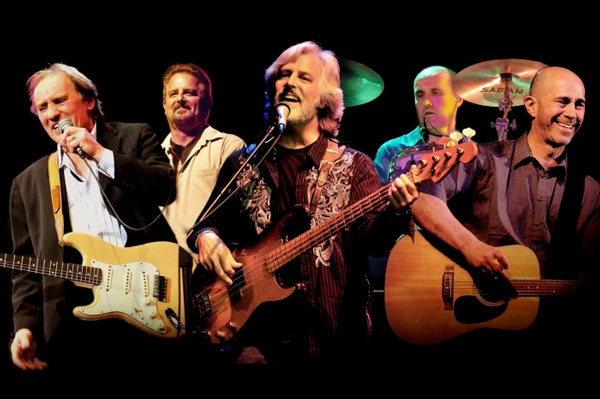
Spotlight Central: Is there anything else you’d like to add, or anything you want to say to fans of the group who are looking forward to seeing you again once this pandemic is over?
John Hall: Sure. Orleans has a website, orleansonline.com, and a Facebook page, facebook.com/orleansmusic, that we’d love for people to come and check out.
Also, I have a new John Hall solo record which will be coming out this winter called Reclaiming My Time. The title is a play on that phrase when one is speaking in the House of Representatives and the Chair says, “I allot Mr. Hall from New York five minutes to speak,” and then somebody else gets up and says, “May I interrupt Congressman Hall?” and I say, “I yield my time to the gentleman from Maryland,” but if I want to get my time back, I stand up and say, “Reclaiming my time,” and then I can take the rest of my five minutes.
So it’s a play on that, and it’s also me reclaiming the time that I lost from my musical career while I was in politics. What would I have been doing? I mean, I spent ten years in elective office — two years in the county legislature; four years on the school board, two of them as president of the school board; and then four years in the House of Representatives — so I’m sort of thinking about that, and this is some of the music that, maybe, would have happened sooner.
It has some interesting stuff including a song Johanna and I wrote together — the first new song we’ve written together in 25 years — plus there are some other tunes which I’ve written in the last year or so. I’m really exited about it, so when you’re all done perusing the Orleans stuff — we’re currently putting out new video and audio by Orleans every Thursday on our Facebook page and our YouTube Channel — and once you’ve had your fill of that and want to hear something different, you can tune into johnhallmusic.com and see what’s going on there.
And if you do come see us and you see anything online you want to comment on, write to us! We actually answer. People write in and comment on all kinds of things. I just got a message from someone who wanted a signed piece of sheet music of “Still the One” for her parents who were celebrating their 50th wedding anniversary; it’s their favorite song. We love doing stuff like that because, otherwise, the music goes out there and who knows if anybody’s actually hearing it? I mean, we see the numbers, but hearing back from individual people who share their stories with us is really a thrill. Especially in this day, when we can’t make contact in person out on the road, it’s nice to hear from people that they were moved by our music and who really “got” something we did!
To learn more about Orleans, please go to orleansonline.com. To find Orleans on Facebook, please click on facebook.com/orleansmusic. For Orleans’ YouTube channel check out youtube.com/channel. For more information on John Hall, please click on johnhallmusic.com.
Spotlight Central. Your source for Jersey entertainment news and reviewsLove Imagery Fine Art Photography. all you need. peace/love/flower/power
FEATURED EVENTS
To narrow results by date range, categories,
or region of New Jersey
click here for our advanced search.
EVENT PREVIEWS
